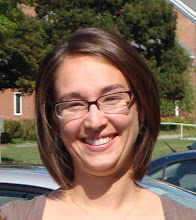Adding more individuals from populations that were already represented in the dataset, two more populations not previously represented and outgroup taxa did not resolve any of the paraphyletic problems. Two morphological species are reprsented in this treee'll call it the "T" group and the "B" group. Neither are monophyletic. There are two problem populations. The first is from the "T" group and is located in the Sierras. This could easily represent a cryptic species. This is the only population I was able to collect (despite widespread searching in the northern Sierras) in 2007. Therefore more collecting may provide additional resolution. Alternativley, there are approximately 90 basepair differences (out of 1424bp) between this population and the nearest relative which leads me to think of things such as pseudogenes. I'm investigating the pseudogene possiblilty by reexamining the chromatograms and translating the sequence to amino acids and looking for stop codons. None of these methods are foolproof, but when combined, may provide some indication of a pseudogene.
I still cannot get COII to amplify/properly sequence for the three individuals I have DNA for in the Sierra population. I get multiple bands and when using gel extraction techniques, do not get clean sequences. I'll try the entire process of amplification, gel extraction and sequencing again for these three individuals.
Subscribe to:
Post Comments (Atom)


No comments:
Post a Comment